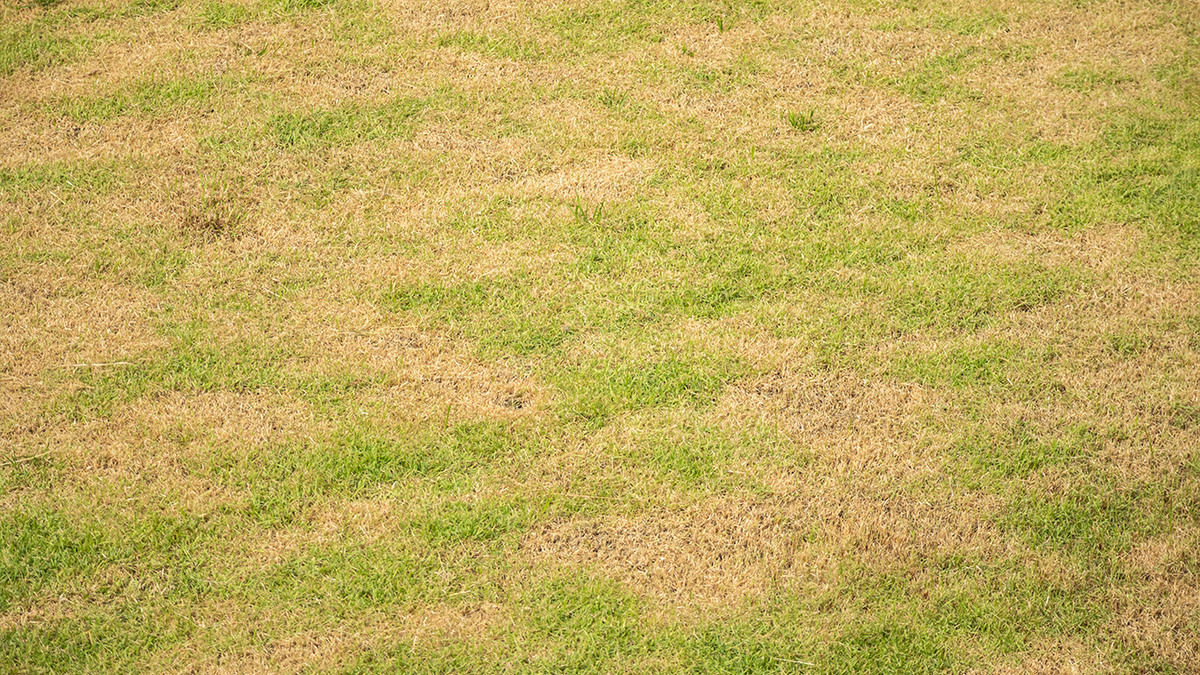A lush, green lawn is the pride of any homeowner, but drought conditions can quickly turn that vibrant landscape into a brown, brittle patch. Lack of rainfall and extended dry spells put stress on your grass, making it more vulnerable to pests, diseases, and overall decline. If you want to maintain a healthy lawn even during drought, it’s essential to understand its impact and take proactive measures to prevent damage.
How Drought Affects Your Lawn
- Dehydration and Dormancy – Grass relies on consistent moisture to stay green and actively grow. When water is scarce, most turfgrasses enter dormancy as a survival mechanism, turning brown and ceasing growth until conditions improve.
- Weakened Root System – Extended drought weakens the root system, making it harder for grass to absorb nutrients and water once rain returns. Shallow roots also increase the risk of erosion and soil compaction.
- Increased Weed and Pest Infestation – Dry conditions stress lawns, creating bare spots that allow weeds to take over. Additionally, drought weakens grass, making it more susceptible to pests like chinch bugs and grubs, which thrive in dry, damaged lawns.
- Soil Health Decline – Lack of moisture affects beneficial microbes in the soil, reducing its ability to support healthy plant life. Compacted and dry soil also makes it difficult for water to penetrate when it finally rains.
How to Protect Your Lawn During Drought
- Water Wisely – Instead of frequent shallow watering, irrigate deeply but less often. Early morning watering is best, as it allows moisture to soak into the soil before the heat of the day causes evaporation. Aim for about an inch of water per week, including rainfall.
- Mow at the Right Height – Keep your mower blade at a higher setting (about 3-4 inches) to encourage deep root growth and provide shade for the soil. Cutting grass too short increases stress and speeds up moisture loss.
- Use Drought-Tolerant Grass Varieties – If you’re establishing a new lawn or overseeding, opt for drought-resistant grass types like Bermuda, Zoysia, or Tall Fescue, which require less water and withstand dry conditions better.
- Mulch Clippings and Improve Soil Health – Leave grass clippings on the lawn to act as natural mulch, helping retain moisture. Aerating your lawn in the spring or fall can also improve soil structure and enhance water absorption.
- Reduce Foot Traffic – Avoid excessive foot or vehicle traffic on drought-stressed lawns, as compacted soil makes it harder for grass to recover once conditions improve.
- Apply Proper Lawn Fertilization – Avoid over-fertilizing during drought, as excessive nitrogen can encourage growth that the lawn cannot support with limited water. Instead, use slow-release fertilizers to provide steady nutrition without overstressing the grass.
Final Thoughts
Drought can take a serious toll on your lawn, but with proper care and maintenance, you can minimize damage and keep your yard resilient. Implementing smart watering strategies, choosing the right grass types, and maintaining healthy soil are all crucial steps in protecting your lawn from the effects of dry conditions. By planning ahead, you can ensure that your lawn stays strong and bounces back once rainfall returns.

